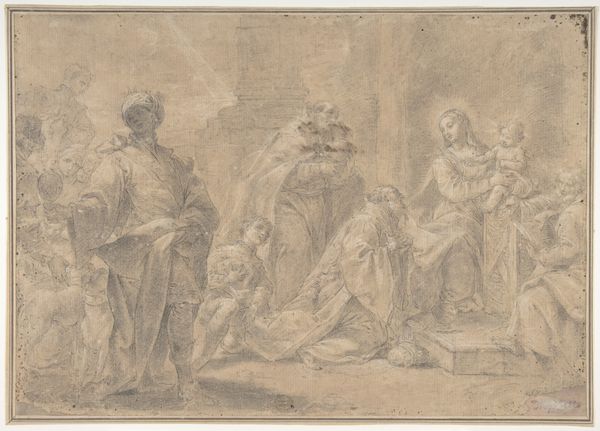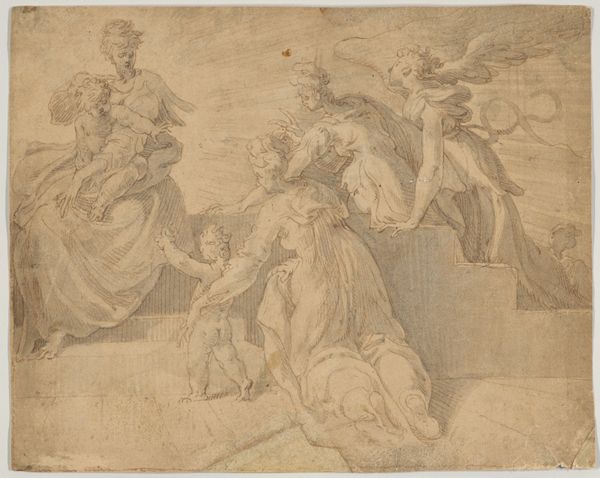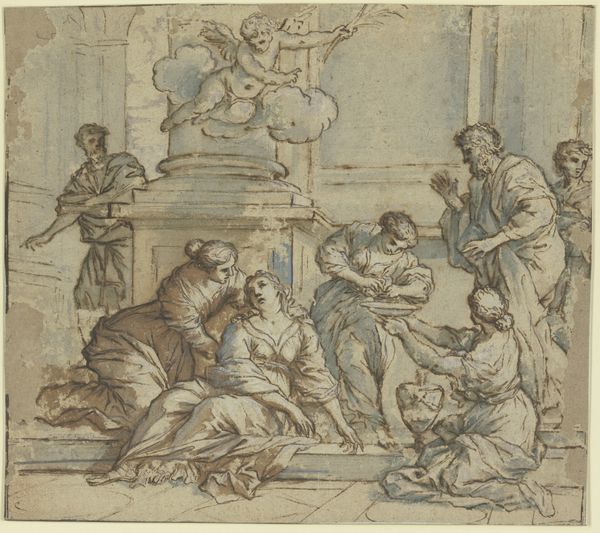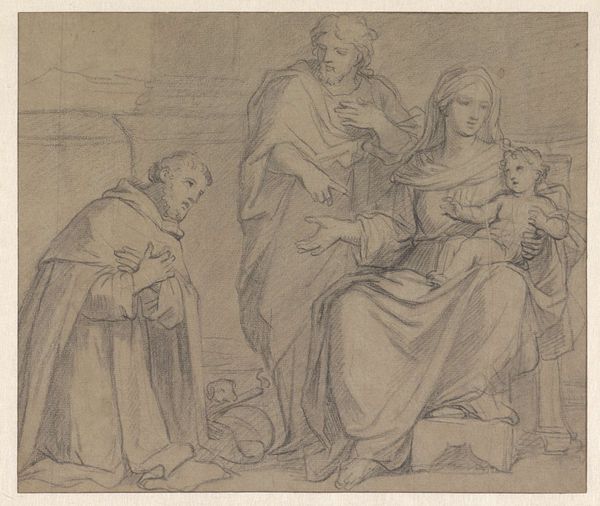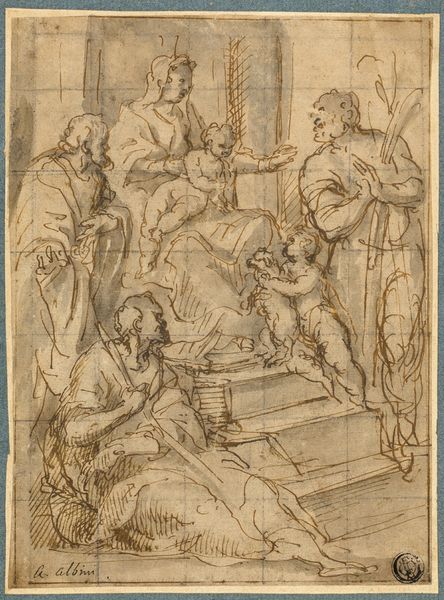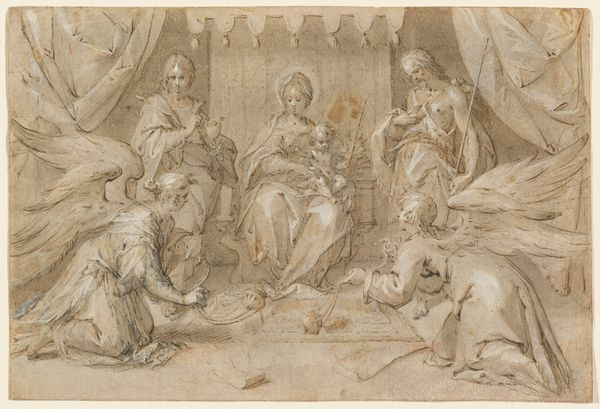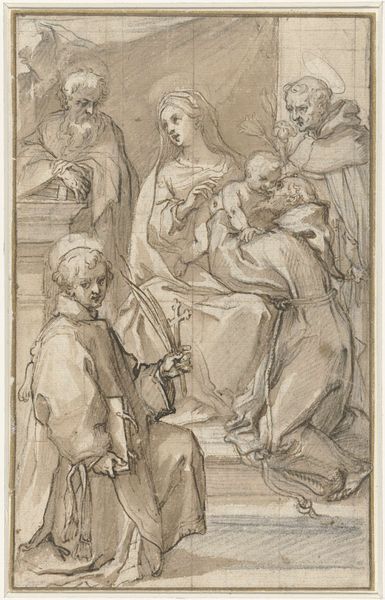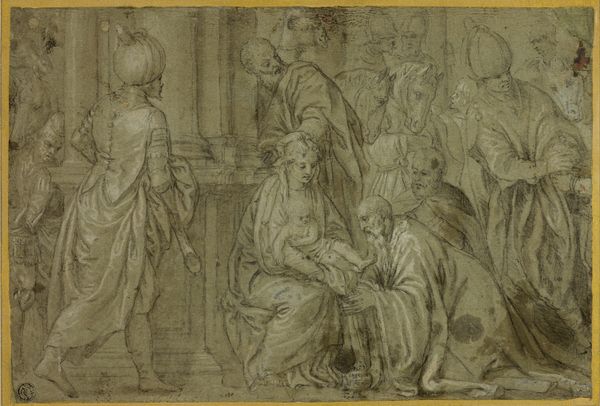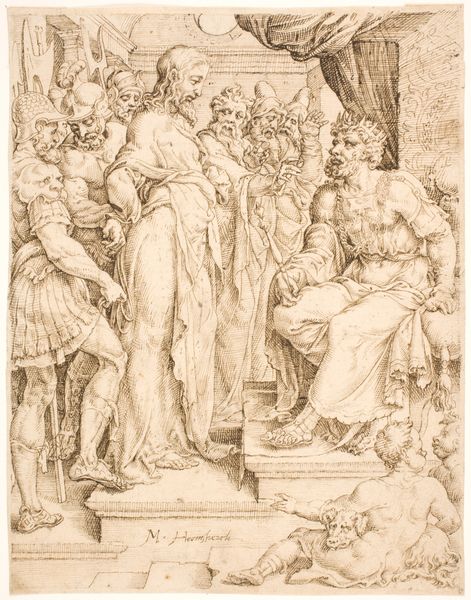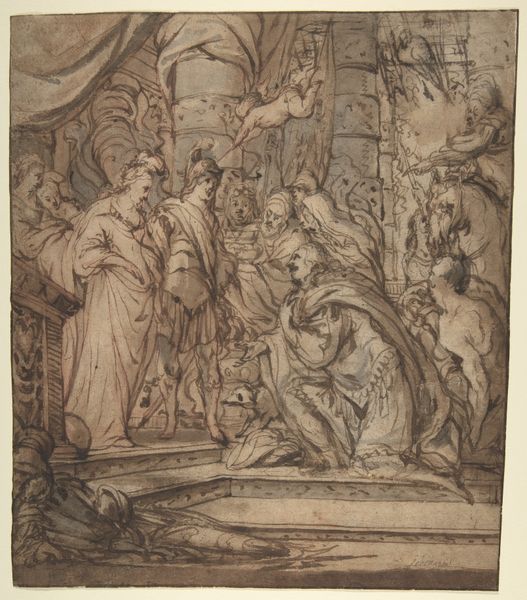
Cornelia, Mother of the Gracchi, Pointing to her Children as her Most Precious Ornaments 1548 - 1598
0:00
0:00
drawing, print, paper, ink
#
portrait
#
drawing
#
narrative-art
# print
#
charcoal drawing
#
figuration
#
paper
#
11_renaissance
#
ink
#
group-portraits
#
history-painting
#
academic-art
#
italian-renaissance
Dimensions: Sheet: 7 13/16 × 8 9/16 in. (19.8 × 21.8 cm)
Copyright: Public Domain
Editor: This is "Cornelia, Mother of the Gracchi, Pointing to her Children as her Most Precious Ornaments," a drawing from around 1548-1598 by Gillis Mostaert the Elder. It's done with ink and charcoal on paper. The composition seems pretty formal and staged, almost like a tableau. What strikes you most about it? Curator: What I notice immediately is the process. It's a drawing, an inherently reproducible medium given its ease of transfer via prints. Think about that choice in relation to its subject: Cornelia, rejecting material wealth – jewelry – for the "wealth" of her children. The work, itself easily reproduced, comments on forms of wealth, tangible versus intangible, accessible versus exclusive. Editor: So you're saying the medium itself contributes to the meaning? How so? Curator: Precisely. Consider the economic and social context. The printing press allowed for wider distribution of images, thereby democratizing art in a way previously impossible. Does Mostaert critique the aristocratic hoarding of treasure by glorifying a mother’s virtue with tools of mass production? How does the labor of making a drawing, inherently replicable through prints, contrast with the labor required to acquire the jewels Cornelia rejects? Editor: That’s fascinating. I never thought about the connection between the printing process and the statement about wealth. Curator: The deliberate choice of materials -- ink, charcoal, paper – highlights this tension between value and accessibility. They were readily available, and prints could easily spread this story of supposed virtuous behavior widely to a burgeoning middle class. So, how does this knowledge influence your understanding of the piece now? Editor: It shifts my perspective completely. I was initially focused on the classical scene, but understanding the process makes the work a social commentary, which brings more depth. Curator: Exactly! Examining materiality allows us to reconsider assumptions and explore underlying power dynamics. Editor: That is helpful; I learned to question artistic intention by analyzing how and why a work was made!
Comments
No comments
Be the first to comment and join the conversation on the ultimate creative platform.
